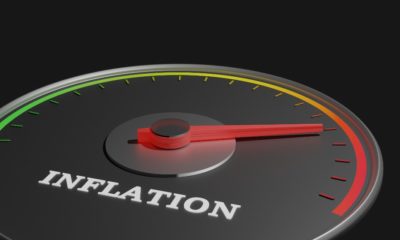Business
Market Volatility Rises As Election Polls Show Tightening Race

The relatively calm markets earlier this month are giving way to more volatility as we approach the election. This is according to a team of strategists at JPMorgan.
“While it is perhaps true that during the first two weeks of October risk markets were supported by a widening of US presidential odds, which by itself implied a lower probability of a close or contested US election result, over the past week or so these odds have started narrowing again,” said a team of strategists at JPMorgan Chase, led by Nikolaos Panigirtzoglou.
According to recent polls by RealClearPolitics, in key battleground states, Democratic nominee Joe Biden leads President Trump by 3.9 percentage points, 49.1 vs. 45.2. That lead has shrunk from a 5 percentage point advantage for Biden about a week ago.
A general election nationwide poll by RCP shows a wider 8.6 percentage-point lead for Biden. However, there are many who feel those polls are not correcting for sampling bias.
Polls Inaccurate?
MarketWatch recently interviewed Phil Orlando, the chief equities strategist at Federated Hermes. There, he said he doesn’t believe the polls accurately reflect how close the race is. In relation to this, he pointed to the surprise win by Trump against Democrat Hillary Clinton in 2016.
“Our base case is that the polls are wrong, there’s an oversampling biased error that a lot of polls aren’t correcting for,” Orlando said.
With a tightening race for the White House, volatility has returned to the market. It will also likely increase in the final two weeks leading up to the election.
A report put out yesterday by SentimenTrader showed that the CBOE Volatility Index or VIX, jumped to levels last seen during the Great Financial Crisis, and tends to rise as stocks fall as it is typically used as a hedge against market downturns.
Market analysts use the ratio to measure how speculative traders are getting. A rise in the put/call ratio means that investors are expecting plenty of volatility between now and November 3.
The VIX, which measures investor bullish or bearishness on the S&P 500 for the next 30 days, is currently near 29, well above its historical average between 19 and 20. This week alone the VIX jumped 6.3%.
Source of Volatility
Jeffrey Mills, the chief investment officer at Bryn Mawr Trust, said some of the volatility likely comes from investors trying to position their portfolios based on who they perceive will win the election. “There could be some front-loaded selling but I do feel like that’s a near-term phenomenon,” he said. But he says no matter who wins, there’s really only one place to invest, and that’s the stock market.
“There is going to be this continued pull toward equity markets — where else are you going to go when you need to earn a certain percentage to fund retirement, fund education?”
If investors are moving money today based on who they think will win the election, Daniel Clifton, head of policy research at Strategas Securities said each candidate will likely benefit different sectors.
A Biden victory will be good for stocks in the infrastructure, renewable energy and technology sectors, said Clifton.
If President Donald Trump is reelected, Clifton said there’s “huge upside” in some sectors. These include defense, financials and even the for-profits like prisons, education and student loan lenders.
Up Next:















